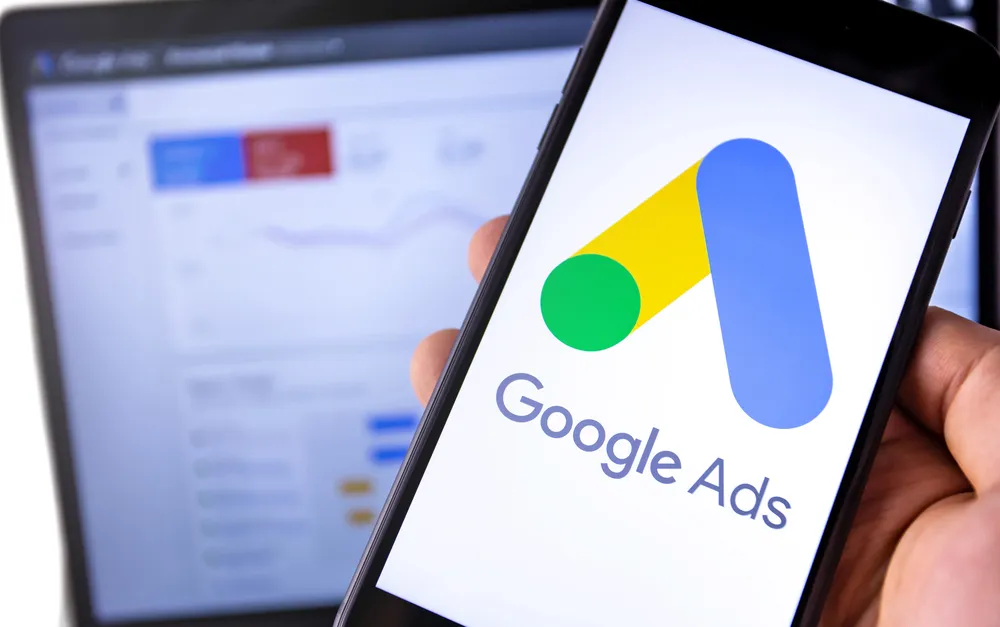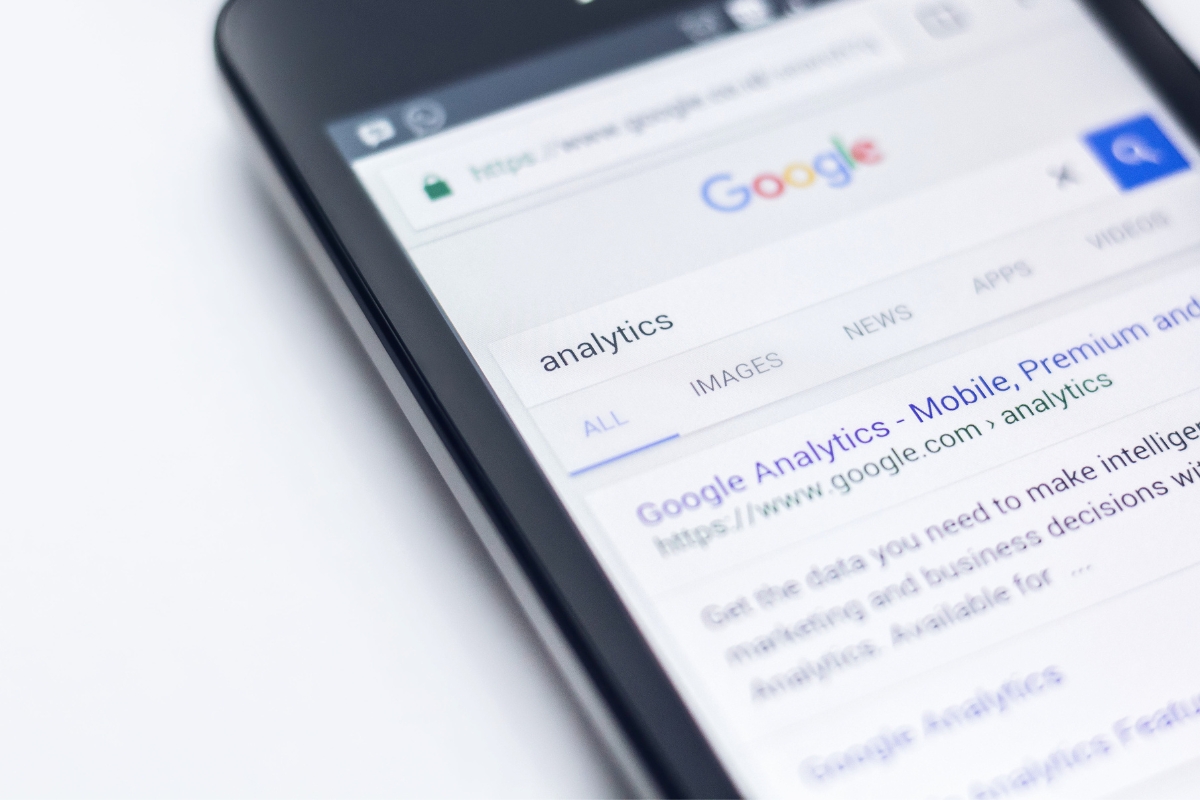Google Ads remains a powerful tool for businesses in 2025, but are you getting the most out of your investment? This guide explores proven strategies to maximize your ROI, focusing on audience segmentation, campaign optimization, and leveraging AI. You’ll learn how to track key metrics, create effective ad copy, and budget wisely. By implementing these techniques, you’ll be better equipped to maximize your ROI in Google Ads performance and achieve tangible results for your business.
Maximizing ROI in Google Ads: Avoid Wasting Your Budget & Start Profiting
Understanding ROI in Google Ads

Understanding Return on Investment (ROI) is crucial for effective Google Ads campaigns. This section explores the definition of ROI in advertising and its significance in measuring campaign success. By utilizing SEO, WordPress, email marketing, and strategic advertising techniques, businesses can optimize their Google Ads costs and maximize returns through effective marketing strategies. A comprehensive ROI calculator helps track performance and guide decision-making for improved results.
Defining Return on Investment for Ads
Return on Investment (ROI) for ads is a crucial metric that measures the efficiency of advertising spend. The ROI formula calculates the ratio of net profit to the cost of investment, helping businesses evaluate their ad performance. By incorporating technical SEO strategies into their WordPress websites and optimizing ad placements, companies can enhance their brand visibility and improve ROI. Effective ads not only generate revenue but also build brand awareness, making ROI a comprehensive indicator of overall marketing success through effective marketing strategies.
The Importance of Measuring ROI
Measuring ROI in Google Ads is essential for businesses to optimize their advertising spend and improve overall performance. By tracking ROI, companies can analyze the effectiveness of their campaigns, allocate budget more efficiently, and implement effective marketing strategies. Utilizing tools like Google Analytics, Google Business Profile, and WordPress, marketers can gain insights into consumer behavior and adjust their strategies accordingly. This approach allows businesses to maximize their return on investment, ensuring that every dollar spent contributes to meaningful results and supports long-term growth.
The numbers tell the story. Let’s dig deeper into the metrics that matter most.
Key Metrics to Track for Maximizing ROI

Businesses can maximize ROI in Google Ads by tracking key metrics. These include conversion rates, click-through rates, cost per acquisition, and quality scores. By analyzing these metrics, businesses can optimize their online advertising marketing strategies, including paid advertising and email marketing campaigns on WordPress. This data-driven approach enables companies to refine their social media presence and improve overall performance in digital marketing efforts.
Analyzing Conversion Rates
Analyzing conversion rates is crucial for maximizing ROI in Google Ads campaigns. By tracking the percentage of website visitors who complete desired actions, such as purchasing goods or requesting logo design services, businesses can assess the effectiveness of their sales marketing strategies. Clients can optimize their net income by evaluating conversion rates across various channels, including website hosting, WordPress, and e-commerce platforms. This data-driven approach enables companies to refine their advertising tactics and improve overall campaign performance:
| Metric | Description | Impact on ROI |
|---|---|---|
| Conversion Rate | Percentage of visitors completing desired actions | Directly affects revenue and campaign efficiency |
| Cost per Conversion | Total ad spend divided by number of conversions | Helps optimize budget allocation |
| Revenue per Conversion | Total revenue generated divided by number of conversions | Measures the value of each conversion |
Evaluating Click-Through Rates
Evaluating click-through rates (CTR) is a crucial aspect of maximizing ROI in Google Ads campaigns. CTR represents the percentage of users who click on an ad after viewing it, serving as a key indicator of ad relevance and appeal. By analyzing CTR, businesses can optimize their digital marketing strategies and marketing strategies, potentially reducing expenses while increasing profit. Advanced tools like WordPress can track and improve CTR, helping clients achieve better results in their advertising efforts.
Assessing Cost Per Acquisition
Assessing Cost Per Acquisition (CPA) is a critical metric for maximizing ROI in Google Ads campaigns. Evaluate your CPA by analyzing data from website reviews and onboarding audits. By comparing the investment in advertising to the income generated, companies can determine the efficiency of their marketing efforts and make informed decisions to optimize their campaigns.
Monitoring Quality Scores
Monitoring Quality Scores is essential for maximizing ROI in Google Ads campaigns. Track this metric which influences ad placement and cost. By focusing on content marketing and improving ad relevance, companies can boost their Quality Scores, leading to lower costs per click and higher ad positions. This approach enhances the overall marketing strategy, generating more qualified leads and increasing sales opportunities. Key factors influencing Quality Scores include:
- Ad relevance to search queries
- Landing page experience
- Expected click-through rate
- Historical account performance
The numbers spoke volumes. Now, let’s dive into the people behind them.
Target Audience Segmentation Strategies

Effective target audience segmentation is crucial for maximizing ROI in Google Ads. By identifying high-value customer profiles, leveraging data for audience targeting, and tailoring ad content for specific segments, businesses can optimize their return on investment. This approach allows companies to refine their website audit process, improve profit margins, and reduce overhead costs while focusing on the most valuable customers.
Identifying High-Value Customer Profiles
Identifying high-value customer profiles is crucial for maximizing ROI in Google Ads campaigns. Advanced analytics are used to segment audiences based on factors such as revenue potential, cost per acquisition (CPA), and budget allocation. By focusing on customers with higher quality scores and greater lifetime value, businesses can optimize their advertising spend and improve overall campaign performance:
| Customer Profile | Key Characteristics | Impact on ROI |
|---|---|---|
| High-Value | Higher revenue, lower CPA, repeat purchases | Increased profitability, better ROI |
| Medium-Value | Moderate revenue, average CPA, occasional purchases | Stable ROI, potential for growth |
| Low-Value | Lower revenue, higher CPA, infrequent purchases | Lower ROI, requires optimization |
Leveraging Data for Audience Targeting
Leveraging data for audience targeting is crucial in maximizing ROI for Google Ads campaigns. By combining reputation management insights with Google Ads data, businesses can create highly targeted marketing campaigns that resonate with their ideal customers. This approach not only improves ad performance but also enhances overall marketing effectiveness:
| Data Source | Targeting Insights | ROI Impact |
|---|---|---|
| Google Search | User intent, keyword relevance | Higher click-through rates |
| Reputation Management | Customer preferences, pain points | Improved ad messaging |
| Google Ads Analytics | Performance metrics, audience behavior | Optimized budget allocation |
Tailoring Ad Content for Specific Segments
Tailoring ad content for specific segments is crucial for maximizing ROI in Google Ads campaigns. Newman Web Solutions leverages local SEO strategies and analytics to create targeted campaigns that resonate with distinct audience groups. By customizing the “about us” section and ad copy to address specific customer needs, businesses can improve their conversion ratio and overall campaign performance. This approach ensures that each segment receives personalized messaging, leading to higher engagement and better return on investment:
| Segment | Tailored Content | ROI Impact |
|---|---|---|
| Local Businesses | Geo-targeted ads, local keywords | Increased local visibility, higher conversion rates |
| Industry-Specific | Specialized terminology, sector-specific solutions | Improved ad relevance, lower cost per acquisition |
| Budget-Conscious | Value propositions, competitive pricing | Higher click-through rates, better cost efficiency |
The campaign’s success hinged on knowing the audience. Now it was time to refine the ads for maximum impact.
Ad Campaign Optimization Techniques

Advanced ad campaign optimization techniques are used to maximize ROI in Google Ads. By implementing A/B testing for ad variations, utilizing negative keywords for cost control, and adjusting bids based on performance, businesses can enhance their web design and content writing strategies. These approaches, combined with effective link building and management, enable companies to optimize their Google advertising campaigns for improved results.
Implementing A/B Testing for Ad Variations
A/B testing is used for ad variations to maximize ROI in Google Ads campaigns. By creating multiple versions of ads and comparing their performance, businesses can identify the most effective messaging and design elements that resonate with their target audience. This data-driven approach allows companies to optimize their marketing automation efforts, generate more qualified leads, and improve overall campaign effectiveness. Businesses can get started with A/B testing by focusing on key elements such as headlines, call-to-action buttons, and ad copy to refine their advertising strategy and achieve better results.
Utilizing Negative Keywords for Cost Control
Negative keywords help control costs and maximize ROI in Google Ads campaigns. By identifying and excluding irrelevant search terms, businesses can prevent their ads from appearing in unrelated searches, reducing wasted ad spend and improving overall campaign efficiency. This targeted approach allows companies to focus their budget on high-quality traffic, resulting in better conversion rates and a higher return on investment.
Adjusting Bids Based on Performance
Google Ads campaigns are optimized by adjusting bids based on performance data. This strategy involves analyzing key metrics such as click-through rates, conversion rates, and cost per acquisition to determine the most effective bid amounts for each keyword or ad group. By dynamically adjusting bids, businesses can allocate their budget more efficiently, focusing on high-performing keywords and reducing spend on underperforming ones. This approach helps maximize ROI by:
- Increasing visibility for top-performing keywords
- Reducing wasted ad spend on low-performing terms
- Improving overall campaign efficiency and effectiveness
- Adapting to market changes and competition in real-time
Leveraging Automation and AI in Google Ads

Automation and AI in Google Ads maximize ROI for clients. By exploring smart bidding strategies, utilizing responsive search ads, and automating reporting for real-time insights, businesses can streamline their advertising efforts and improve performance. These advanced techniques enable companies to optimize their campaigns efficiently, staying ahead in the competitive digital marketing landscape.
Exploring Smart Bidding Strategies
Smart bidding strategies maximize ROI in Google Ads campaigns. By leveraging machine learning algorithms, these strategies automatically adjust bids based on various factors such as device, location, and time of day. This approach optimizes ad performance by targeting users most likely to convert, ultimately improving cost-effectiveness and campaign results. Smart bidding strategies offered by Google Ads include:
- Target CPA (Cost Per Acquisition)
- Target ROAS (Return on Ad Spend)
- Maximize Conversions
- Enhanced CPC (Cost Per Click)
Utilizing Responsive Search Ads
Responsive search ads maximize ROI in Google Ads campaigns. These AI-driven ads automatically adjust their content and format to match user search queries, improving relevance and performance. By testing various combinations of headlines and descriptions, responsive search ads optimize ad effectiveness over time, leading to higher click-through rates and conversions. This approach allows businesses to reach a wider audience with more tailored messaging, ultimately enhancing their digital marketing strategy and ROI:
- Automatic ad optimization based on user queries
- Multiple headline and description combinations
- Improved ad relevance and performance
- Higher click-through rates and conversions
- Wider audience reach with tailored messaging
Automating Reporting for Real-Time Insights
Automated reporting is used for real-time insights in Google Ads campaigns. This approach enables businesses to access up-to-date performance data, allowing for quick decision-making and strategy adjustments. By automating report generation, companies save time and resources while maintaining a constant pulse on their advertising efforts:
| Benefit | Impact |
|---|---|
| Real-time data access | Faster decision-making |
| Time and resource savings | Increased efficiency |
| Continuous performance monitoring | Improved campaign optimization |
The machines had done their part. Now it was time for human creativity to shine.
Creative Strategies for Effective Ad Copy

Creative strategies to craft effective ad copy maximize ROI in Google Ads. By focusing on compelling headlines, engaging call-to-actions, and emotional appeals, businesses can create impactful advertisements that resonate with their target audience. These techniques help improve click-through rates, conversions, and overall campaign performance, ensuring optimal results in digital marketing efforts.
Crafting Compelling Headlines
Crafting compelling headlines in Google Ads campaigns is important. By focusing on clear, concise, and benefit-driven headlines, businesses can capture users’ attention and increase click-through rates. The agency recommends using power words, addressing pain points, and incorporating specific numbers or statistics to create urgency and relevance in ad copy. This approach helps companies stand out in search results and drive more qualified traffic to their websites, ultimately improving ROI.
Utilizing Call-to-Actions That Drive Engagement
By crafting action-oriented phrases that create a sense of urgency, such as “Get Started Today” or “Limited Time Offer,” businesses can encourage users to take immediate action. The agency recommends tailoring CTAs to specific audience segments and testing different variations to optimize click-through rates and conversions, ultimately improving the overall ROI of Google Ads campaigns.
Incorporating Emotional Appeals
By tapping into users’ desires, fears, and aspirations, the agency creates compelling ad content that resonates on a deeper level. This approach helps businesses connect with their target audience, increasing click-through rates and conversions. Effective emotional appeals in Google Ads can include:
- Highlighting pain points and offering solutions
- Creating a sense of urgency or exclusivity
- Appealing to aspirations and personal growth
- Leveraging social proof and testimonials
- Using storytelling to evoke empathy and connection
The numbers revealed the campaign’s impact. It was time to allocate funds wisely for maximum returns.
Budgeting Wisely for Greater ROI

Strategic budget allocation is essential for maximizing ROI in Google Ads. This section explores performance-based fund distribution, setting effective daily and monthly budgets, and adapting spending based on trend analysis. By implementing these tactics, businesses can optimize their advertising investments and achieve superior results in their digital marketing campaigns.
Allocating Funds Based on Performance
Allocate funds based on performance in Google Ads campaigns. By analyzing key metrics such as click-through rates, conversion rates, and return on ad spend, businesses can identify top-performing keywords, ad groups, and campaigns. This data-driven approach allows companies to shift their budget towards the most effective elements of their advertising strategy, maximizing ROI and ensuring optimal use of resources.
Setting Daily and Monthly Budgets
Set effective daily and monthly budgets for Google Ads campaigns. By analyzing historical data and campaign goals, the agency determines optimal spending limits that balance reach and cost-efficiency. This approach ensures consistent ad visibility throughout the month while maintaining flexibility to adjust budgets based on performance and market trends.
Reassessing Budget Based on Trends
Reassess budgets based on trends in Google Ads campaigns. By analyzing performance data, seasonal patterns, and market shifts, businesses can adjust their advertising spend to maximize ROI. This dynamic approach allows companies to capitalize on high-performing periods and reduce waste during slower times, ensuring optimal resource allocation throughout the year:
| Trend Factor | Budget Adjustment | Impact on ROI |
|---|---|---|
| Seasonal demand spikes | Increase budget during peak periods | Higher conversions, improved revenue |
| Competitor activity changes | Adjust bids to maintain visibility | Sustained market presence, cost control |
| Performance fluctuations | Reallocate funds to top performers | Enhanced campaign efficiency, better returns |
The numbers revealed the campaign’s true impact. But there was more to uncover.
Utilizing Retargeting to Enhance ROI

Leverage retargeting strategies to enhance ROI in Google Ads campaigns. By understanding effective retargeting techniques, creating custom audiences, and measuring campaign success, businesses can re-engage potential customers and drive conversions. This approach maximizes advertising efficiency, improves brand recall, and ultimately boosts return on investment for digital marketing efforts.
Understanding Retargeting Strategies
Use retargeting strategies to enhance ROI in Google Ads campaigns. By displaying targeted ads to users who have previously interacted with a website or specific products, businesses can re-engage potential customers and increase conversion rates. Effective retargeting techniques include:
- Segmenting audiences based on behavior and interests
- Creating personalized ad content for different segments
- Setting frequency caps to prevent ad fatigue
- Implementing cross-channel retargeting for consistent messaging
- Utilizing dynamic product ads to showcase relevant items
Creating Custom Audiences for Retargeting
Create custom audiences for retargeting to enhance ROI in Google Ads campaigns. By segmenting website visitors based on their behavior, such as specific page views or cart abandonment, the agency develops tailored ad content that resonates with each group. This targeted approach increases the likelihood of conversions, as users are presented with relevant offers based on their previous interactions. Custom audiences enable businesses to optimize their ad spend by focusing on high-potential customers, ultimately improving campaign performance and ROI.
Measuring the Success of Retargeting Campaigns
Measure the success of retargeting campaigns by tracking key performance indicators (KPIs) such as click-through rates, conversion rates, and return on ad spend. The agency analyzes these metrics to assess the effectiveness of retargeting efforts and make data-driven optimizations. By comparing the performance of retargeted audiences against non-retargeted groups, businesses can quantify the impact of their campaigns and refine their strategies for maximum ROI.
The campaign’s success was clear. Now, the challenge was to stay ahead of the ever-changing Google Ads landscape.
Staying Current With Google Ads Trends

Stay up-to-date with Google Ads trends to maximize ROI. By monitoring industry changes, adapting to algorithm updates, and following best practices for 2025, businesses can optimize their advertising strategies. This approach ensures that companies remain competitive in the ever-evolving digital marketing landscape, leveraging the latest innovations to drive better results and higher returns on their Google Ads investments.
Monitoring Industry Changes in Google Ads
Monitor industry changes in Google Ads to maximize ROI. The agency stays abreast of new features, ad formats, and targeting options introduced by Google, ensuring clients benefit from cutting-edge advertising technologies. By keeping a pulse on industry trends, such as the shift towards automation and machine learning.
Adapting to Algorithm Updates
Adapt to algorithm updates in Google Ads to maintain high ROI for clients. The agency closely monitors changes in Google‘s advertising algorithms, analyzing their impact on campaign performance and adjusting strategies accordingly. By staying ahead of these updates, businesses can optimize their ad targeting, bidding strategies, and content to align with Google‘s evolving ranking factors. This proactive approach ensures that campaigns remain effective and competitive in the dynamic digital advertising landscape:
| Algorithm Update | Adaptation Strategy | ROI Impact |
|---|---|---|
| Quality Score Changes | Refine ad relevance and landing page experience | Lower CPC, higher ad positions |
| Automated Bidding Updates | Adjust bidding strategies and campaign goals | Improved conversion rates, better budget allocation |
| Keyword Matching Revisions | Optimize keyword lists and negative keywords | Enhanced targeting precision, reduced wasted spend |
Following Best Practices for 2025
Follow best practices for 2025 to maximize ROI in Google Ads. Focus on AI-driven personalization, voice search optimization, and video advertising to stay ahead of emerging trends. By leveraging these advanced techniques, businesses can enhance their targeting precision, improve ad relevance, and ultimately drive better results from their Google Ads campaigns.
Frequently Asked Questions
How can I measure and improve ROI in my Google Ads campaigns?
To measure and improve ROI in Google Ads, track conversions, analyze key metrics like click-through rate and cost per acquisition, and optimize your campaigns. Focus on refining targeting, improving ad copy, and adjusting bids to maximize performance while minimizing costs. Regularly test and refine your strategies for better results.
What are the most important metrics to track for Google Ads success?
Key metrics for Google Ads success include click-through rate (CTR), conversion rate, cost per click (CPC), quality score, return on ad spend (ROAS), and impression share. Tracking these metrics helps optimize campaigns, improve performance, and maximize ROI for advertisers.
How can audience segmentation strategies enhance Google Ads performance?
Audience segmentation in Google Ads allows advertisers to target specific groups based on demographics, interests, and behaviors. This strategy enhances ad relevance, improves click-through rates, and optimizes ad spend by delivering tailored messages to the right audiences, ultimately boosting campaign performance and ROI.
What role does AI play in optimizing Google Ads campaigns?
AI enhances Google Ads campaigns by analyzing vast amounts of data, predicting user behavior, and optimizing bidding strategies in real-time. It automates ad targeting, adjusts budgets, and creates personalized ad content, ultimately improving campaign performance and ROI for advertisers.
How can I create effective ad copy that drives conversions?
Effective ad copy that drives conversions focuses on benefits, uses persuasive language, and includes a strong call-to-action. Highlight your unique selling proposition, address customer pain points, and create a sense of urgency. Test different versions to optimize performance and tailor your message to your target audience.
More Leads, Lower Costs: The Newman Web Solutions Difference
Maximizing ROI in Google Ads is crucial for businesses seeking to optimize their digital advertising efforts in 2025. By implementing proven strategies such as audience segmentation, ad campaign optimization, and leveraging automation and AI, companies can significantly enhance their advertising performance and cost-effectiveness.
At Newman Web Solutions, we specialize in high-ROI Google Ads campaigns that leverage cutting-edge targeting, AI optimization, and data-driven bidding strategies to maximize your ad spend. Whether you’re looking to dominate local searches, scale e-commerce sales, or outbid competitors profitably, our tailored approach delivers measurable growth. Call (404) 301-9189 or schedule a FREE 30-minute strategy session online to discover how we can transform your Google Ads performance.





